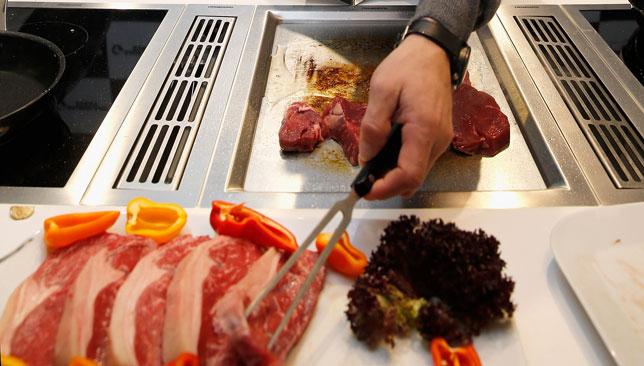
Last week I wrote about the fact that grains were far too prominent in our diets (and my dogs), either obviously or hidden (grain fed animal products) even though we may be eating a wide variety – wheat, rice, oats, bulgar wheat, cous-cous to name a few.
We tend to overload on carbohydrates and often the wrong types. This week and next week, I want to share with you the thoughts of those who have delved into our digestive history and see what we can learn. The following instalment will focus entirely on the first point of the Primal Blueprint: diet.
The Primal Blueprint (founder, Mark Sisson) is a very simple list of general things our early ancestors did to become what and who they were – the exact patterns of behaviour that enabled them to shape their bodies into healthy, robust, happy beings – and which allowed them to pass 99.9 per cent of those genes down to us. It is based on lifestyle principles that have governed human health, evolution and peak performance for over two million years and consists of 10 actions we can all incorporate into our lives.
Here are the first 4; the other 6 will follow next week:-
1. Eat lots of animals, insects and plants
THEN: This describes the 200 to 300 individual foods our ancestors ate depending on location and they ate sporadically: lots when it was plentiful, the surplus being stored for lean times, a random pattern to keep the body constantly prepared.
NOW: Focus on quality protein, healthy fats and eat a rainbow including plenty of berries and nuts. Avoid grazing, eat only when you are hungry and until you are satisfied.
2. Low level aerobic movement”
THEN: They spent a few hours a day foraging, hunting and gathering, all at a slow pace; climbing, crawling, all barefoot on uneven surfaces. These activities allowed the body to store fat ready to be converted into energy and worked every muscle, ligament and tendon of the body.
NOW: Take regular long walks or swims rather than long high intensity runs or bike sprints.
3. Lift heavy things
THEN: Women carried babies and bundles of firewood; men carried heavy weapons and tools, dragged animals and lifted their body weight into trees for a better view or to escape danger. These short bursts of intense energy stimulated growth hormone and increased muscle mass.
NOW: Spend 30 minutes 2 or 3 times a week lifting weights to work all muscle groups through a wide range of motion or do some body resistance exercise (both yoga and Pilates are good choices). Apart from building muscle, you will maintain healthy bones, mobile joints and flexible muscles.
4. Sprint from time to time
THEN: Sometimes this was necessary to escape danger or catch a meal, other times this may have taken place during play. The hormonal changes that took place ensured a better performance the next time.
NOW: Try to add some short high intensity sprints to your exercise routine to stimulate fast twitch muscle.